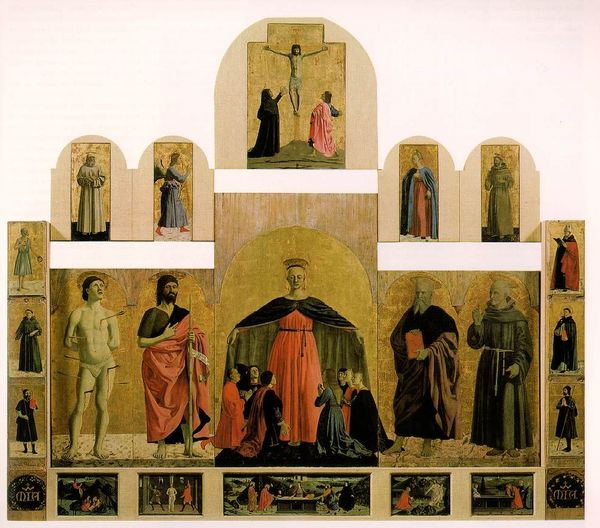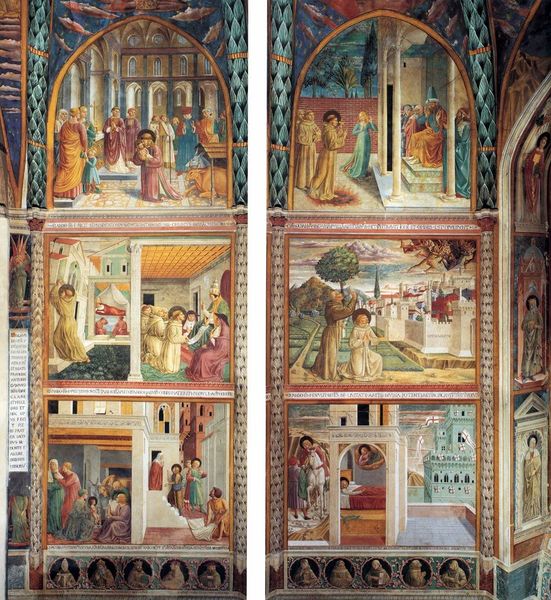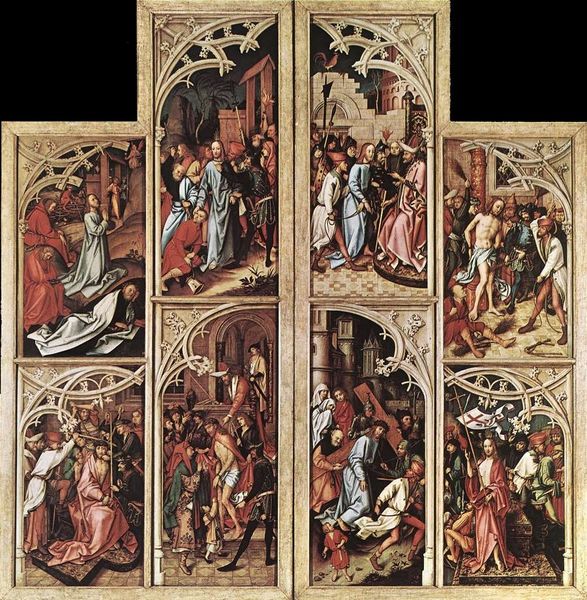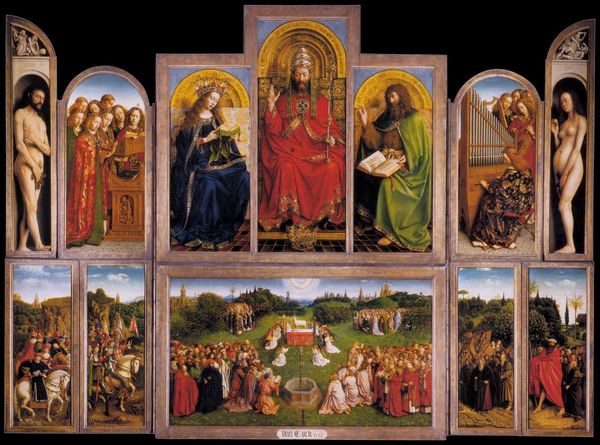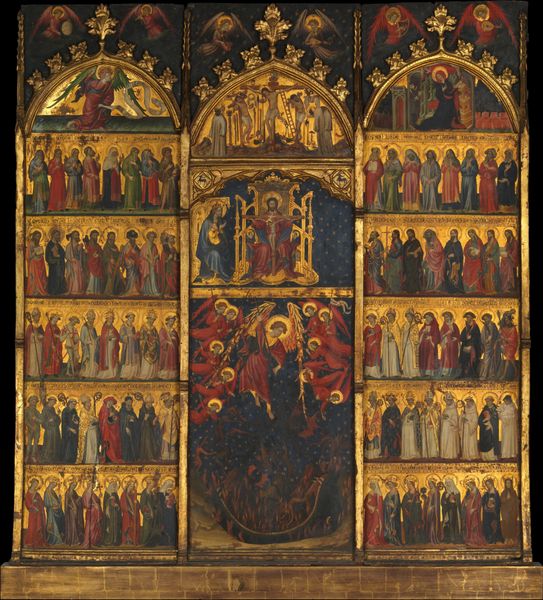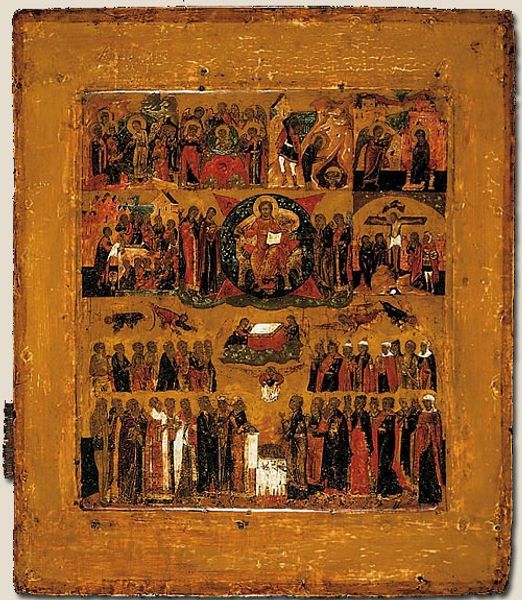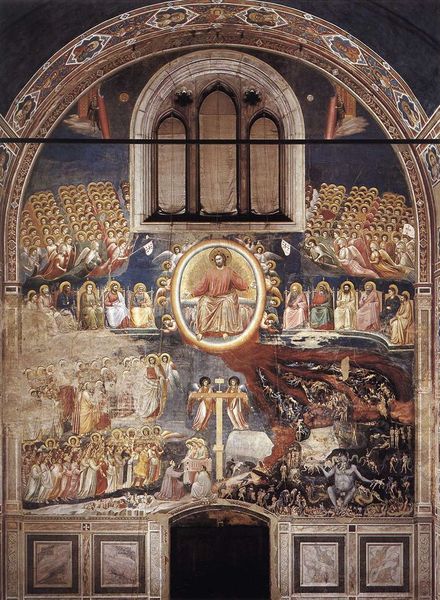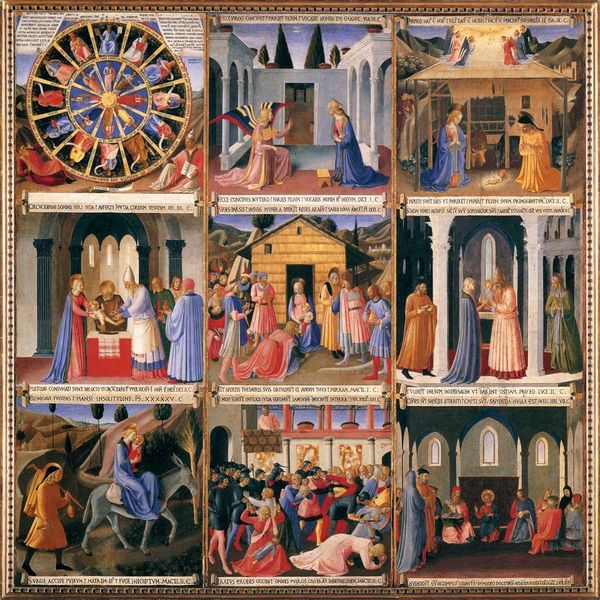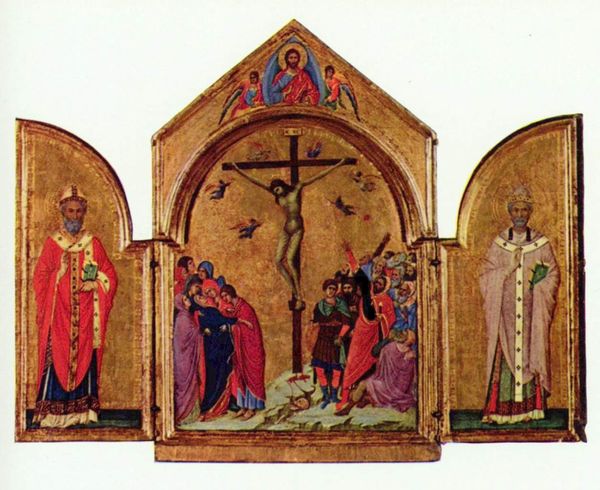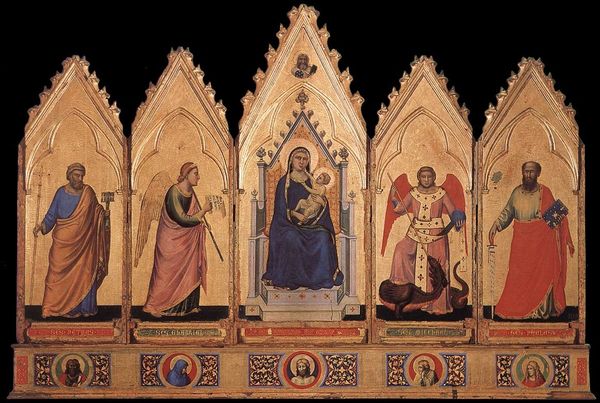
tempera, painting
#
medieval
#
narrative-art
#
tempera
#
painting
#
sienese-school
#
jesus-christ
#
group-portraits
#
christianity
#
history-painting
#
italian-renaissance
#
early-renaissance
Copyright: Public domain
Duccio painted these Scenes from the Passion of Christ in the early 14th century in Siena, Italy, using tempera and gold leaf on wood. The work depicts the final days of Jesus' life in a series of narrative panels. The visual language employs hierarchical scale and stylized figures typical of the Sienese school, reinforcing the religious dogma of the time. The gold background symbolizes divine space, setting these biblical events apart from the earthly realm. Italy, during this period, was deeply religious, and art served the institutional function of reinforcing the power and teachings of the Catholic Church. Works like this would often be found in churches, monasteries, or commissioned by wealthy religious patrons. Duccio's work, while traditional, also began to incorporate more naturalistic elements, marking a transition in art history. To fully grasp the nuances of this painting, one might consult theological texts, historical records of Sienese society, and studies of artistic patronage. The interpretation of art is always contingent on understanding the social and institutional contexts in which it was produced and consumed.
Comments
No comments
Be the first to comment and join the conversation on the ultimate creative platform.

